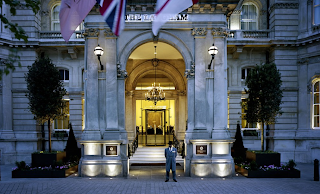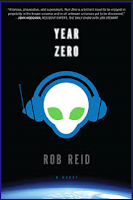Posted By Daisy
BY NOW, everyone's sick of Bridget Jones and the countless articles written about her in recent weeks. Here's another one to add to the slush pile.
I went to see Helen Fielding speak in Primrose Hill on the night of her book launch and got a bit tipsy on one warm cup of wine. Which gave me the courage to ask her this (totally objective) question in front of 300 people...
'Do you think a 34-year-old singleton moving to London nowadays would have the same experience as Bridget, despite the fact that it's 17 years later and the internet now exists?'
She laughed when she realised I was writing down everything she said - but I had a 1200 word feature to write. And her answer was vague and non-committal and something about the internet having changed everything. I thought she'd say that people are the same everywhere, and that everyone's ultimately still looking for love no matter what year it is.
And afterwards, still elated from getting her autograph, we ate steak and blue cheese sauce and drank vodka and coke and I decided that I still loved London, despite the smelly old Tube and the fact that earlier on the Piccadilly line, a crumpled tissue fell out of a man's pocket onto my lap...shudder.
THERE are women everywhere. A glamorous elderly
blond wearing a jaunty head scarf chats to her friends in the reserved seats in
the front row, while another lady necks a plastic cup of red wine before taking
off her coat and sitting down. A woman in leather trousers and a digital-print
shirt opens her newly purchased hard-back with a squeak, while two men behind her
joke that women outnumber men here and that they should have sold their tickets
on the black market. At the back, a bookseller ties a few balloons to his
stand, while an elderly gentleman arranges a motley assortment of wine bottles
and some plastic cups on a desk.
On the evening of the publication of her first novel
in ten years, and having already reached number one in the book charts as well
as appearing on the One Show and the 6 o’clock radio news, Helen Fielding has
shown up in this draughty hall in Primrose Hill to appear in conversation with
veteran broadcaster, Sue MacGregor. Her goal is to raise money for her local
Primrose Hill community library.
Initially panned by the critics as being
inauthentic, anti-feminist and as presenting an unrealistic version of a now
middle-aged Bridget, ‘Mad About the Boy’ is slowly beginning to receive positive
reviews. Fielding’s long gold chain glitters, catching the light as she looks
around smiling, seemingly unperturbed any negative reactions to the book.
After all, she dealt with criticism after the
publication of Bridget Jones’s Diary in 1996.
‘We’ve got to be able to have comic heroines without
being so terribly anxious about what it says,’ she said after the publication
of Bridget Jones’s Diary.
I loved the original book and films. At 17, I
admired Bridget for her admirable lack of self-reflection, her guilelessness
and for having the impetuosity to run outside in the snow in her jumper and
leopard print knickers.
I enjoyed spending the weekend reading ‘Mad About
The Boy.’ It’s still funny. Daniel Cleaver has become a parody of all the
dreaded Uncle Geoffrey’s at parties, and the satirical view of over-zealous
North London mothers and their offspring (Atticus or Luigi) and Bridget’s
responses their frantic emails and organised lunches make me smile.
Her relationship with her younger boyfriend is humorous. He reads an article about toy-boys and the rise of the sinister
cougar, and gets scared, while she sees a sign for an Over-50’s club
(activities include Bingo and Tea Dancing), and gets Botox.
There are moments of poignancy, when Bridget sits at
home alone on a Saturday night, or when she wishes Mark was there to accompany
her and her two children to the school play, or when she remembers her
much-loved father and wonders how he would have reacted to certain situations.
Just as in previous novels, Bridget’s still searching for love, and being a
klutz and over-eating (this time, it’s bags of grated cheese), and furiously
chewing Nicorette gum.
There are a few clunkers in the book. At times the
language feels a bit try-hard, like a grandmother trying to be hip. At one
point, Bridget sees a young ‘iBabe’ in a bar, and later, one of the mothers
threatens her children with ‘Don’t you dare touch that dustbin or I shall enter
you in the HUNGER GAMES’. I’ve never heard anyone speak like this.
However, the major criticism of the novel has been
about the ‘cruel’ death of Mark Darcy. Although I never understood the
attraction to him at the time. He was just so deathly dull
‘I don’t think cruel is quite fair because we have
to remember that he’s not actually a living person,’ laughs Fielding, referring
to the screech of horror in online forums after the death of Darcy was revealed
in the Sunday Times magazine prior to the book’s publication.
‘I wanted to make her be in that situation [a single
mother], and I was also fascinated by the internet age. When I first wrote
Bridget, there wasn’t even the internet. Daniel Cleaver’s messages [about the
short skirt] was just the office messaging service.’
‘I nearly didn’t put in her age but it’s like the
30-something spinster – it’s like the idea that when you get to a certain age,
you’re going to start knitting….although there’s nothing wrong with that…She
does have to handle certain things she didn’t have to handle before, but she’s
basically the same person,’ says Fielding, herself now a 55-year-old single
mother of two.
Fielding’s talent lies in her ability to make the
mundane funny.
‘What makes me laugh? Life,’ she says, joking that the
long gap between books was because she had discovered the internet and had been
‘Googling for 16 years’.
Her previous attempts to write serious novels were
unsuccessful.
‘I can only sort of write about what I know,’ says
Fielding, although she is at pains to point out, with a grin, that she is not
Bridget Jones.
But Fielding is not as flighty as she sometimes
appears. She used to write for three hours every morning before going to work
on the political desk at the London Independent. She says her first novel,
‘Cause Celeb’ was ‘unreadable’ but fails to mention that it actually garnered
good critical reviews. And she’s apparently worth £30 million. Likewise,
Bridget is not as stupid as she appears, despite texting her boyfriend during
an important meeting about the publication of her screen play, and obsessively
counting twitter followers. Jones has raised two children on her own, written a
screenplay, and is described as a ‘genius’ by her erstwhile publisher. She’s
not doing too badly at all.
It’s clear that many women still feel a kinship
towards Bridget and her mishaps, as some women in the audience raise their
hands and speak about their personal lives, something Fielding says happens to
her regularly. We’ve all identified with Bridget at some point in our lives, be
it as a single thirty-something year old, or a widowed 51-year-old.
A fifteen-year-old fan asks Fielding about the
nature of friendships in the book, tripping out the names Shazza and Jude
confidently, as if she knew these characters well.
‘The measure of happiness isn’t the partner, it’s
the wider group. People go through different phases in their lives but it’s
really friends who carry you through,’ says Fielding, who mentions that her
friend, film producer, Richard Curtis, is in the audience.
‘The thing I like about the character is that she
does have this joie-de-vivre, she dusts herself off and gets going again,’ says
Fielding.
‘If you’re ever feeling a big down, a mixture of a
self-help book and a PG Wodehouse can’t be [beaten],’ says Fielding, who
thought she had coined the term ‘singleton’ but later realised she had
inadvertently borrowed it from Wodehouse.
It’s obvious how fortunate Fielding feels to have
won success third time round.
‘It’s a wonderful thing to happen and you can’t
complain about it,’ she says. ‘Honestly, for the first event in the evening,
it’s been a really lovely way to start it off and keep [my] feet on the
ground.’
Afterwards, a long queue of women snakes around the
hall waiting for Fielding to sign their book.
When it’s my turn, I tell her I’m a 34-year-old
singleton who’s recently moved to London and ask her write something
heartening. She looks up at me for a moment while continuing to write before
thrusting the book back at me. KBO, she’s written inside. Which I find out
later is Bridget’s motto. Keep Buggering On.
 |
| It was also Winston Churchill's motto, apparently. |
My
Top quotes from ‘Mad About The Boy’.
Summer is here! Finally, the sun is out, the trees
are in blossom and everything is marvellous. But oh no! My upper arms are not
ready. (Bridget)
Better to die of Botox than die of loneliness
because you’re so wrinkly. (Talitha)
He wants me to say things like ‘Lick the soles of my
shoes, lick out the toilet bowl. I mean, it’s just not hygienic. (Jude)
Children are asleep and house is all dark and quiet.
Oh God, I’M SO LONELY. Everyone else in London is out laughing uproariously
with their friends in restaurants and then having sex. (Bridget)
Have a look on Goop….See what Gwyneth has to say
about sex and French-style parenting. (Tom)
Oh, darling, this is what I always feared would
happen. I’ll get trapped on a desert island where they have no hair-extension
specialist or Botox aesthetician and all my artifice will drain away. (Talitha)
Maybe will go to yoga and become more flexible. Or
maybe will go out with friends and get plastered. (Bridget)
Never pursue a man, it will only make you unhappy.
Anjelica Huston never, ever called Jack Nicholson. (Bridget)
Mum and Una strode furiously towards us with mad
bouffed hair and wearing identical pastel Kate Middleton’s mother coat-dress
outfits. (Bridget)
I was just taking a slurp of wine and laughed in the
middle, then choked with the wine still in my mouth, and sick started coming up
my throat. (Bridget)
But surely it is not normal to be too vain to put on
your reading glasses to nit-comb your toy boy? (Bridget)










































